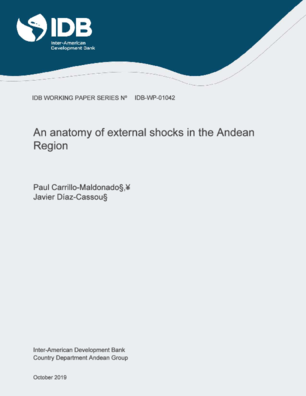An Anatomy of External Shocks in the Andean Region
Date
Oct 2019
This paper applies an agnostic structural vector autoregression (SVAR) approach to study the response of four Andean economies (Bolivia, Colombia, Ecuador, and Peru) to international shocks. More specifically, we look at the response of gross domestic product, the real exchange rate, fiscal and trade balances, and inflation to global demand, commodity price, monetary and financial shocks. Our results confirm that the Andean region is highly exposed to changes in external conditions, and especially to global demand fluctuations associated with declines in commodity prices. However, despite the similarities that characterize these countries in terms of their income level or their export specialization, we find substantial heterogeneity in the effects of the shocks, which we attribute to differences in the shock-absorbing capacity of their macroeconomic frameworks. This result underlies the need to put in place external buffers to fully exploit the benefits of a greater presence in international markets, be it in the form of exchange rate flexibility, international reserves, or fiscal and monetary space to act countercyclically.




